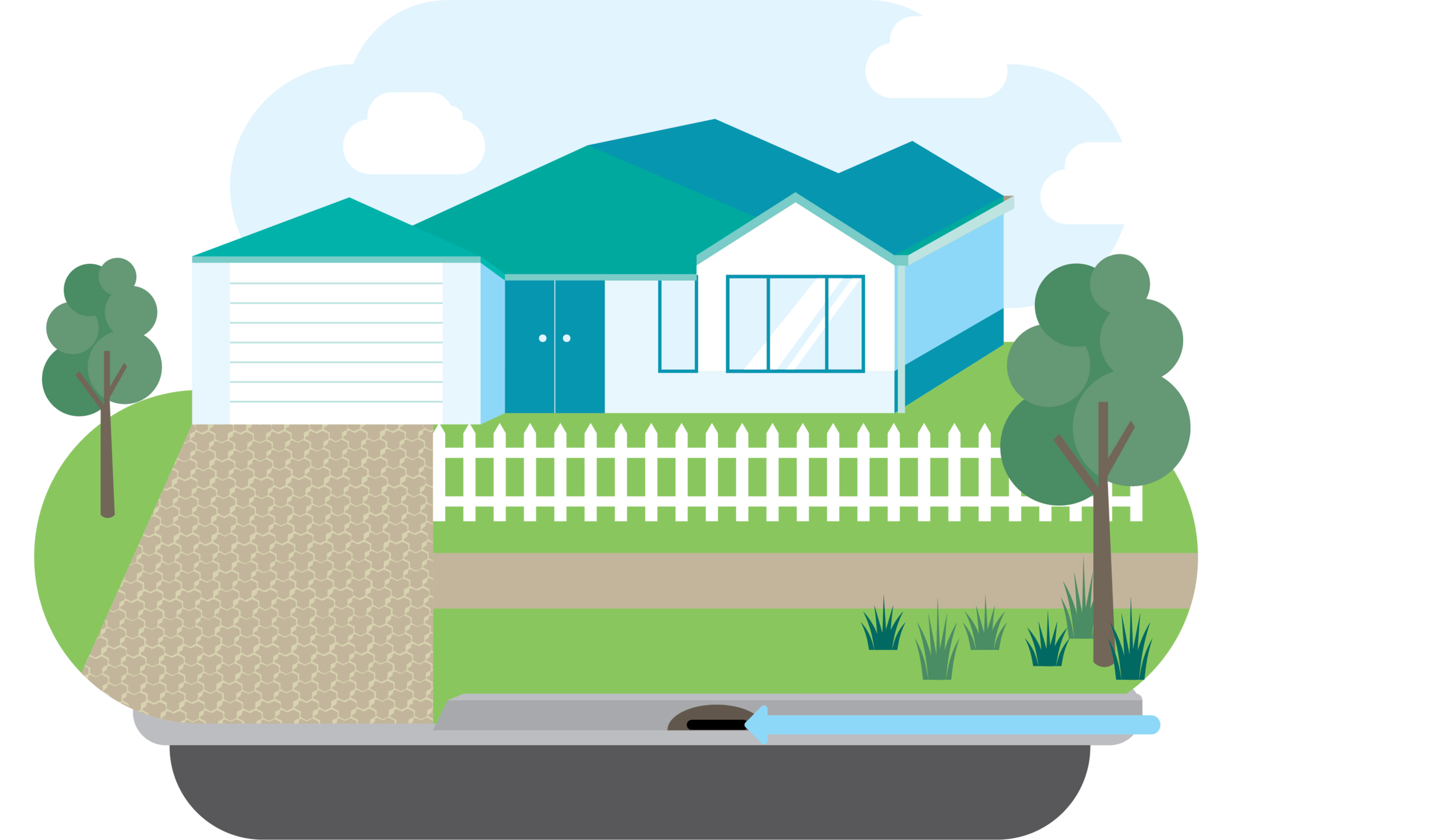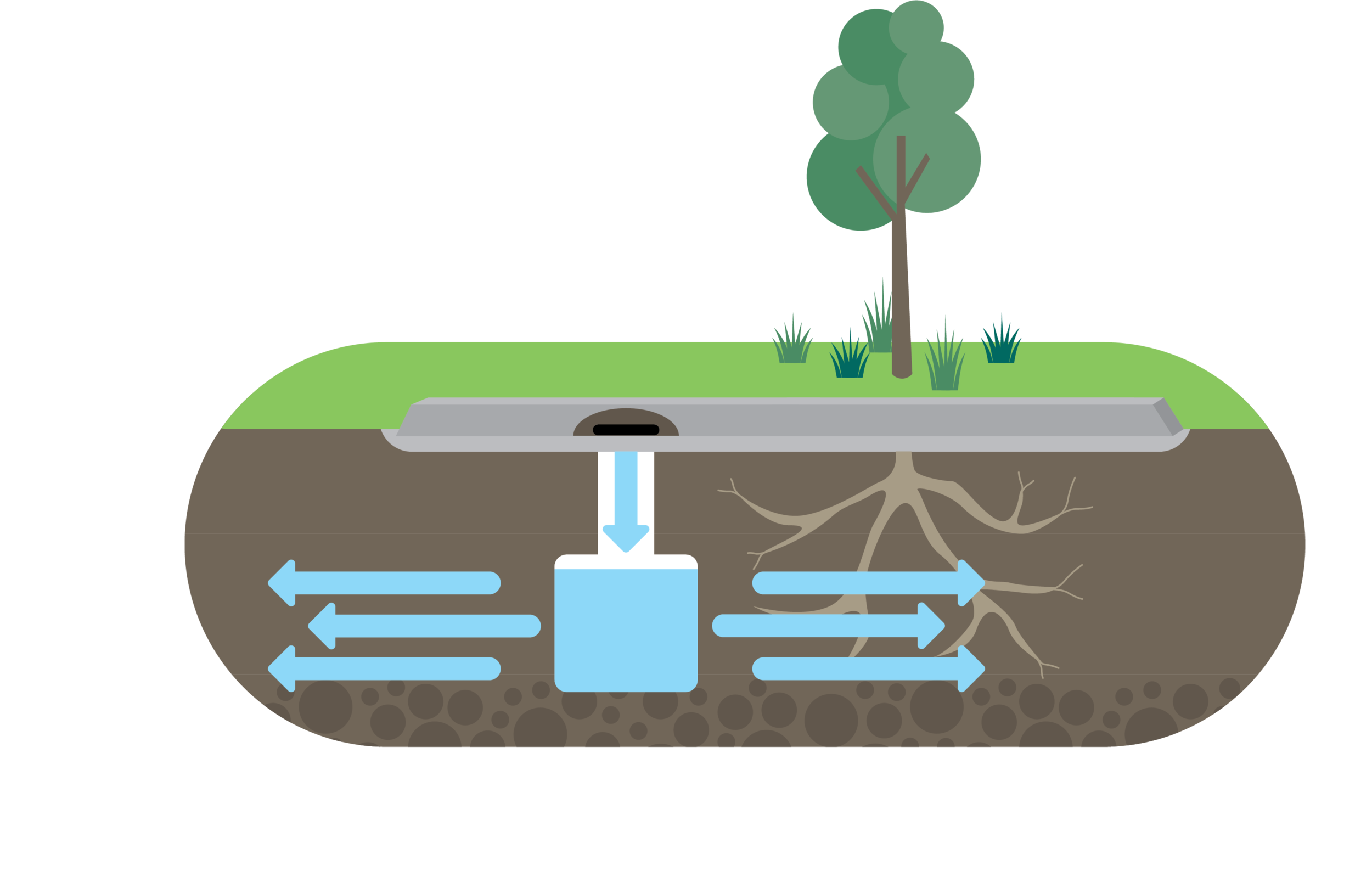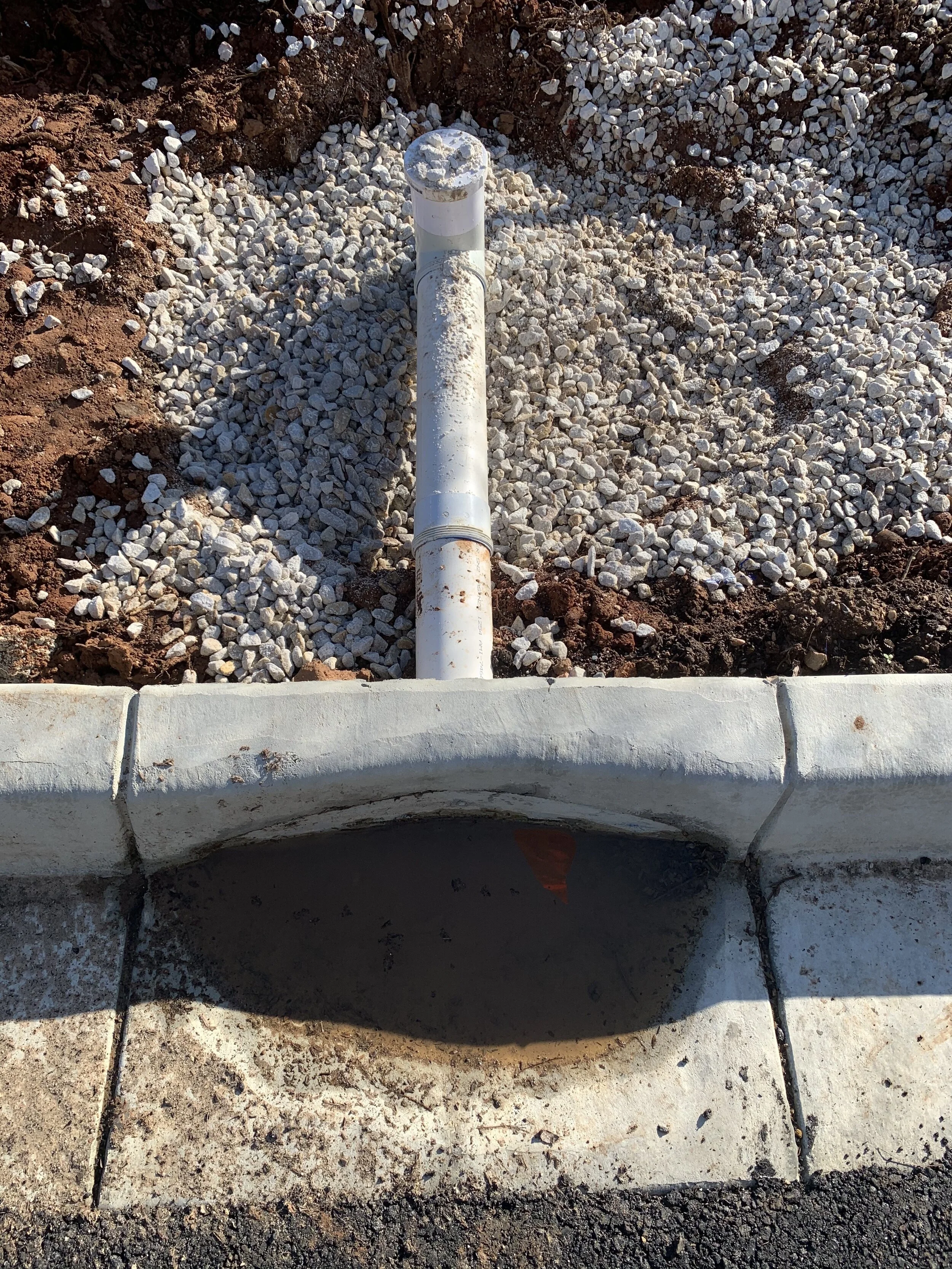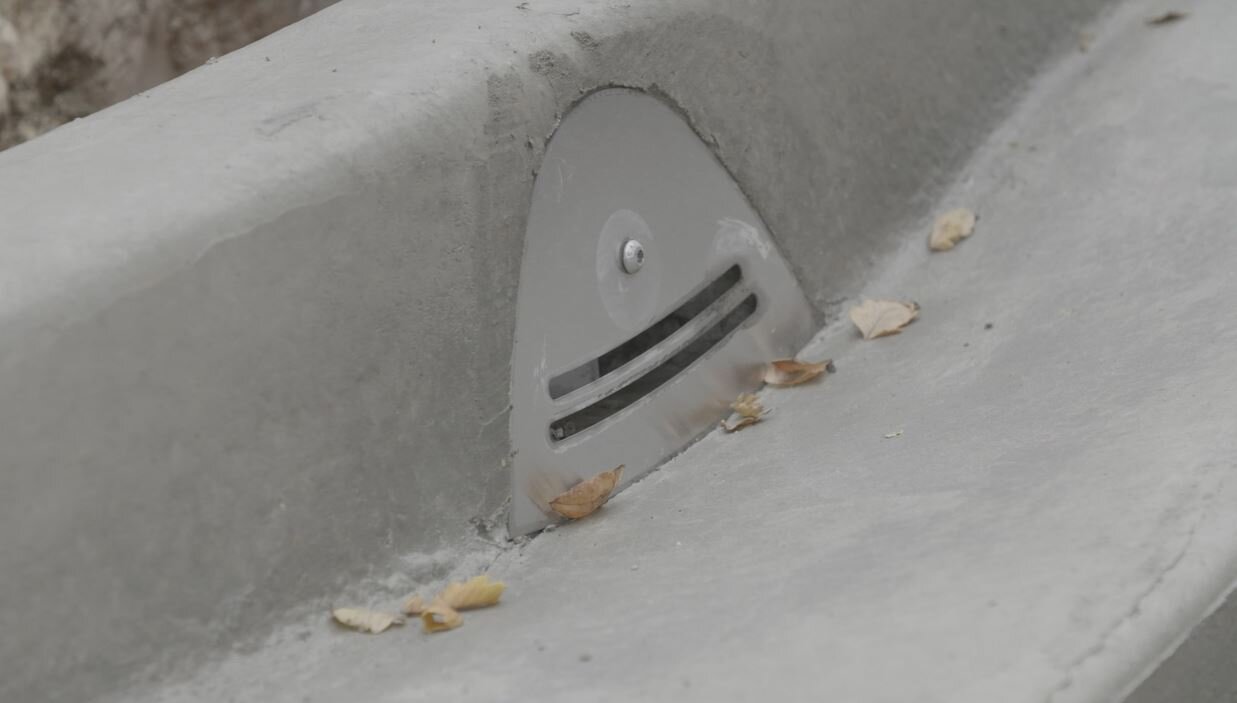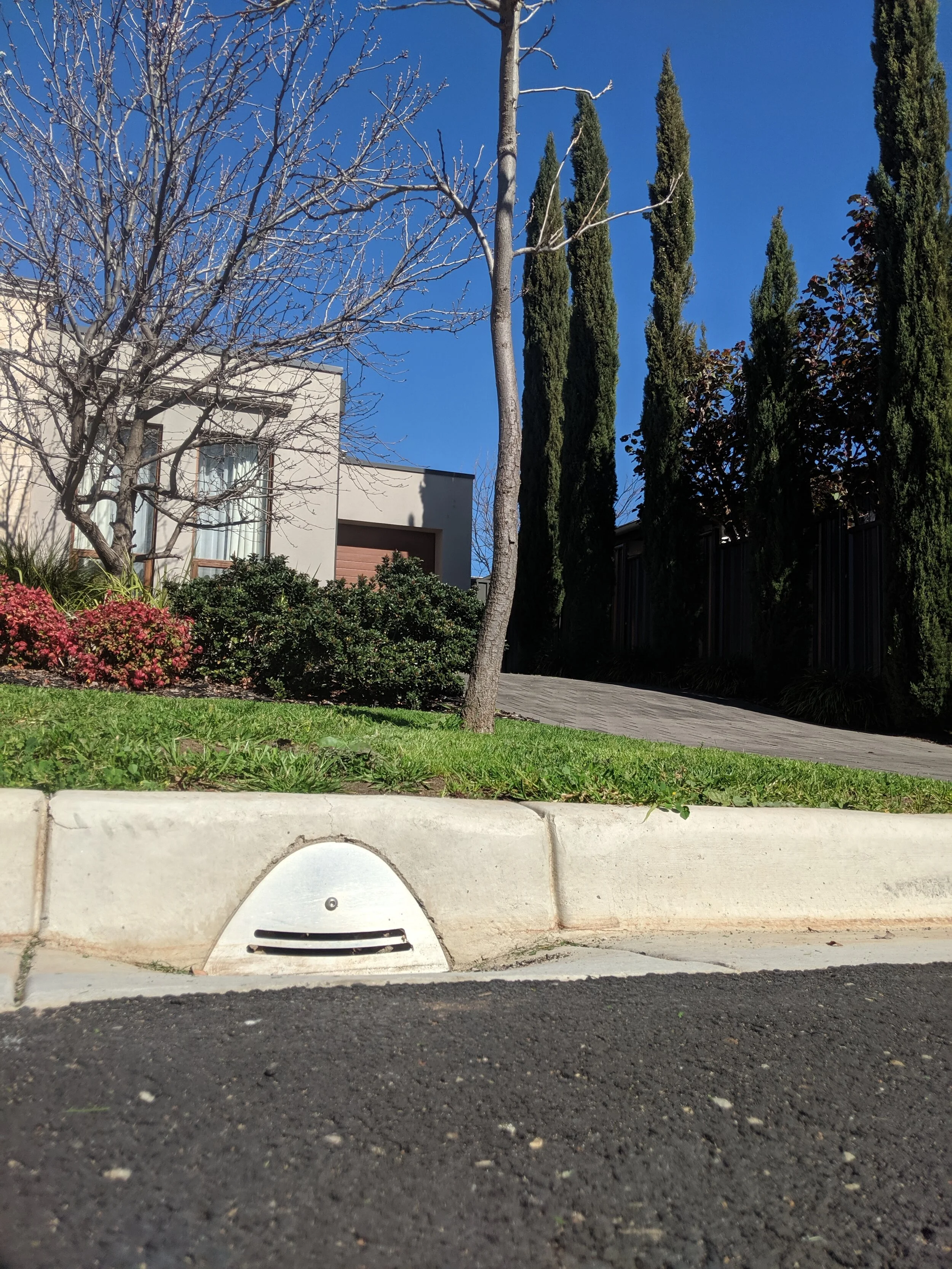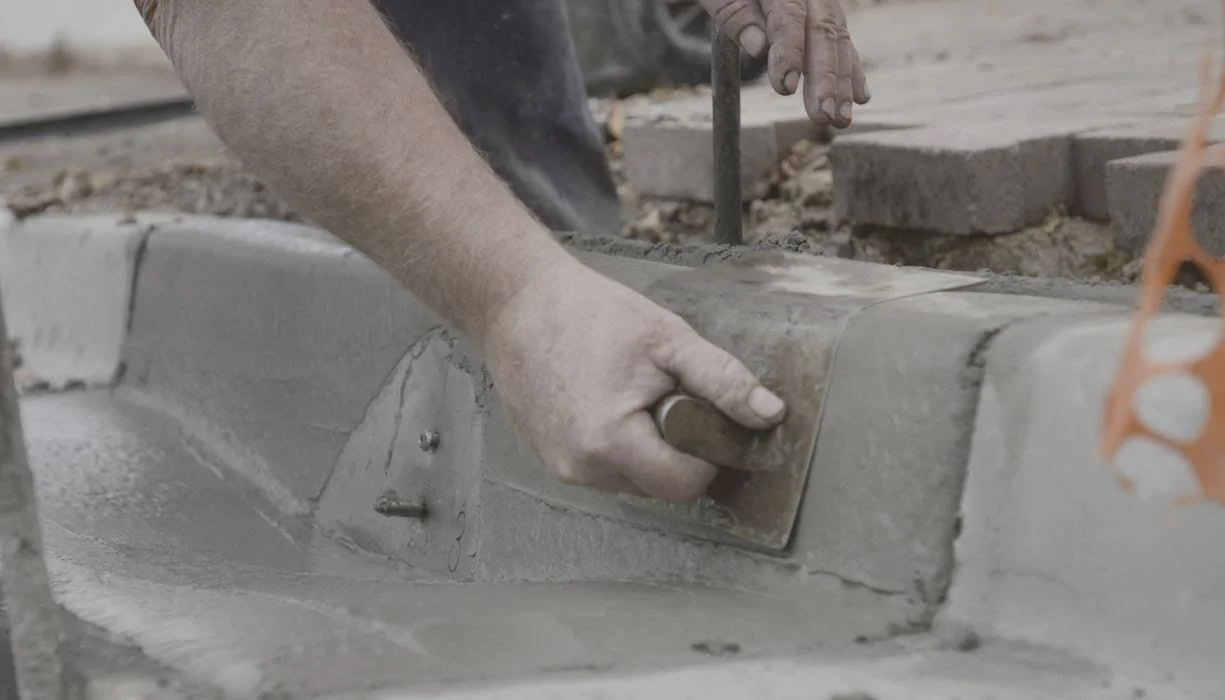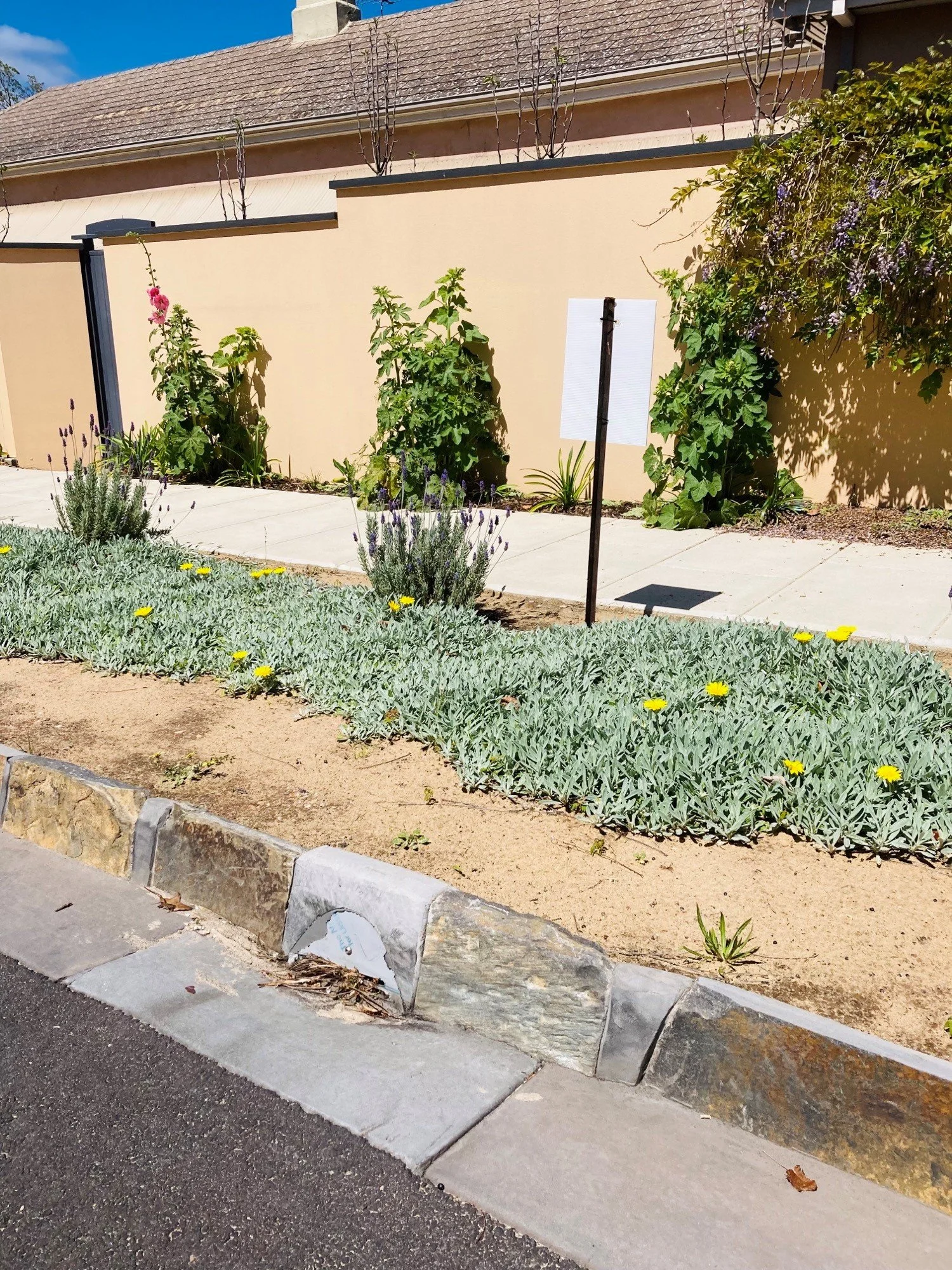Street Tree Inlets
We are growing a cooler, greener and more resilient urban forest by installing street tree inlets that quench the thirst of street trees.
Street tree inlets are the little vents you sometimes see in the side of a kerb (not to be confused with stormwater drains).
They are installed to direct water flowing along the road into a leaky storage crate positioned underground near street trees and plants.
Water is held and slowly leaked into the surrounding soil and filtration layers below. This means water is available for the trees and plants, keeping them hydrated for longer – a great alternative to being washed away into the stormwater drains!
The leaky storage system can also be called ‘kerbside infiltration units’ or ‘water wells’, but we like to call them ‘verge soakers’. There are many different types of systems, including the ‘roof to tree’ verge soaker (also known as a B-Pod), which carries water from a roof down pipe into a leaky crate.
Resilient East councils have been installing street tree inlets for over 10 years. When planting a new tree or upgrading a kerb, council will assess if there’s an opportunity to install an inlet. Ongoing monitoring (see Water Sensitive Urban Design for A Resilient East, page 10) has shown there is very little sediment build up inside the crate, or tree root intrusion, which means less cleaning and maintenance is needed. These systems help to break down leaf litter into nutritious compost for good soil, insect and tree health! We also shown that without maintenance, these systems still continue to function as they should after 5-10 years!
A street tree inlet under construction.
Street tree inlets are installed by carefully digging a hole in the verge, without damaging any existing plant roots. A leaky crate is placed into the ground and connected to a small pipe that leads to the kerb. The crate is surrounded with filtration material (usually small rocks) which help to spread the flow and direction of water. A vented plate is installed in the kerb and the area around is sloped to direct water to flow towards the vent, into the small pipe, and into the crate. You can help ensure these systems operate efficiently by safely removing anything on the street that has the potential to block them.
Did you know trees play an important role in our neighbourhoods, especially during the hot summer months? Trees and vegetation help to cool and shade our homes and streets, which increases our level of comfort.
A newly constructed street tree inlet.
Street tree inlet in Glenunga
Benefits of installing street tree inlets:
reduces pooling of water on roads;
helps to grow trees and ensure their survival, especially important when they are young, or, during hot, dry temperatures;
prevents roots from rising to the surface looking for water (which can cause cracks and bumps on footpaths and roads);
filters pollutants and chemicals out of water; and
allows water to be used locally.
see them in action!
Aimed at councils and featuring City of Prospect, this video created by Space Down Under explains more about Street Tree Inlets. Check out their website for more information and research at spacedownunder.com.au
On location with Street Tree Inlets
Some of our Street Tree Inlets can be found at:
Herbert Street and Briar Avenue in Medindie
Gilbert Street and Thames Street in Gilberton
Wakelin Street, Glynde
Taylor Avenue, Payneham
Gage Street, Firle
Dunks Street, Parkside


